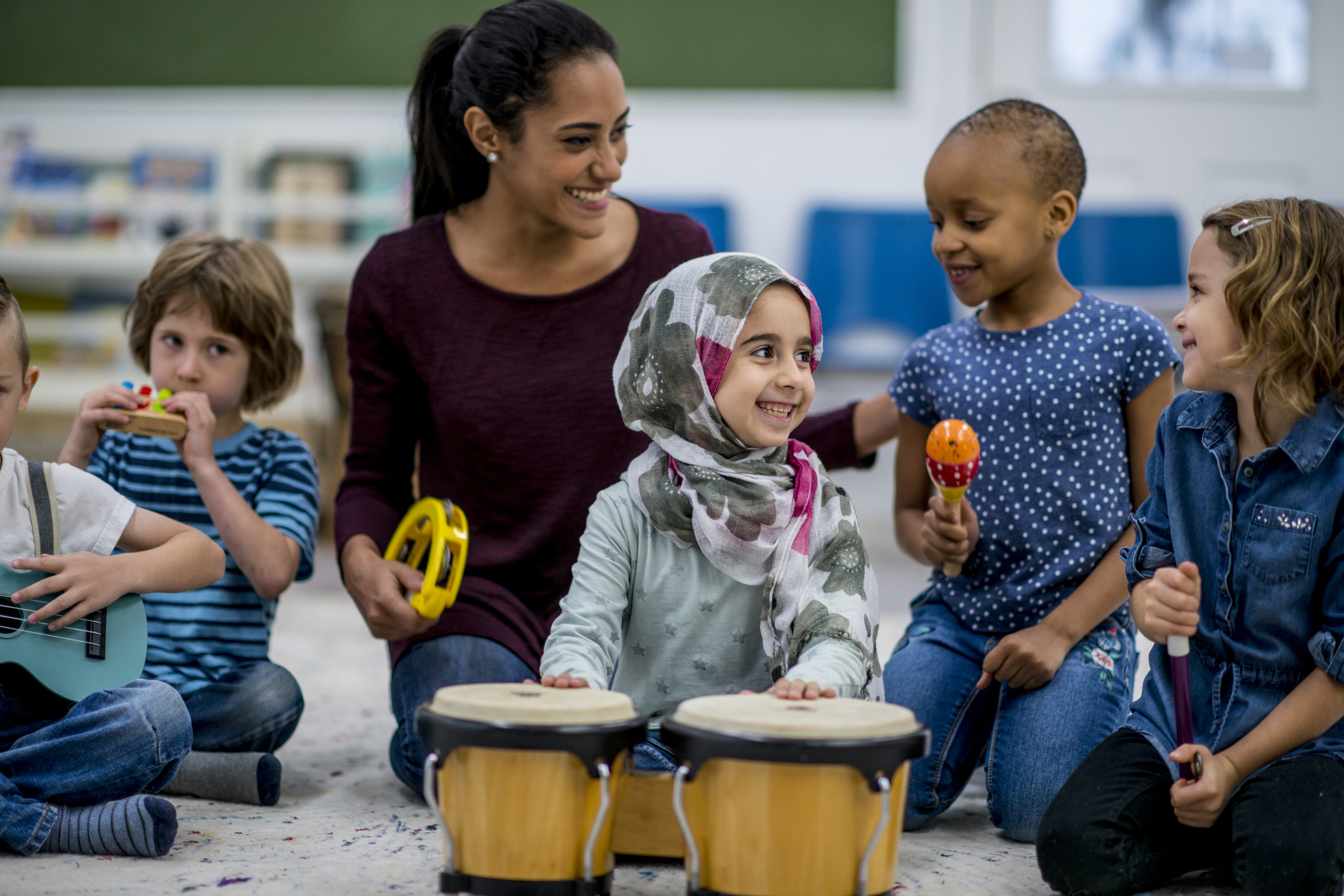Michelle Griczika (M. Ed.) is a certified educator with eight years of teaching experience in Massachusetts and has a foundation in classroom management.
Read on as Michelle dives into how to celebrate cultural diversity in your classroom through learning about and celebrating cultural holidays.

Cultural celebrations are powerful bridges in today's diverse classrooms, drawing students closer through shared experiences and understanding. By highlighting these traditions, educators underscore the importance of inclusivity and shine a light on the myriad traditions that students bring with them. Each student, with their unique heritage and cultural background, contributes to the colorful mosaic of the classroom, and recognizing this diversity is a step toward creating an environment where every individual feels valued and acknowledged.
The Importance of Celebrating Cultural Diversity
Sense of Belonging
By embracing diverse traditions, every student feels valued and understood, reinforcing their place in the classroom community.
Mutual Respect
When students learn about their peers' cultures, it fosters understanding and mutual respect, leading to stronger connections between classmates.
Global Perspectives
Incorporating various cultural celebrations from around the world provides students with a broader view of the world. It's not just about knowing facts; it's about understanding diverse values, stories, and experiences.
Practical Steps to Introduce Cultural Celebrations
1. Student Collaboration
Engage directly with students to learn about their unique traditions. This direct interaction provides accurate information and makes students feel involved and valued.
2. Sharing Stories and Traditions
Create opportunities to learn about students’ cultures, be it through storytelling sessions, sampling foods, or crafting sessions that highlight their heritage.
3. Multicultural Resources
Expand the classroom library and materials to include multicultural literature and resources. These provide authentic insights into different cultures and promote a comprehensive learning experience.
How to Encourage Continuous Cultural Exchange
- Honor Traditions Regularly: Rather than limiting cultural celebrations to specific times of the year, foster an environment where diverse traditions are recognized and celebrated consistently.
- Use Diverse Holidays as Learning Points: Embrace the rich variety of holidays from different cultures as opportunities for learning. This not only acknowledges the importance of the celebration but also offers educational insights.
- Peer-led Initiatives: Empower students to take the lead in sharing and exploring cultures and celebrations from different countries. These initiatives, driven by students' genuine interest, can be impactful and authentic.
Exploring Specific Celebrations
Teaching diversity and creating an inclusive environment for learners can start by allowing them to explore cultural celebrations throughout the year. These cultural holidays not only help students to understand different cultures but also promote important values and offer opportunities for reflection. Here are just some ways that key holidays from around the world can be celebrated in your classroom to promote cultural diversity.
Diwali: The Festival of Lights
Originating from India, Diwali is a festival celebrating the victory of light over darkness. It's a time when homes are illuminated with candles, and colorful rangoli (artistic patterns made with colored powder) are created. In the classroom, students can make paper lanterns or design rangoli with colored sand.
Lunar New Year: A Time for Renewal and Family
Primarily celebrated in East Asian countries, the Lunar New Year is a time for family reunions, feasting, and traditional performances like dragon dances. Classroom activities can include crafting red envelopes, typically for giving gifts during the festival or showcasing traditional foods and costumes.
Ramadan and Eid: Reflection and Festivity
Ramadan, observed by Muslims, is a month of fasting, reflection, and community. It culminates in Eid al-Fitr, a festive celebration marking the end of the fasting period. Students can explore the significance of fasting, create Eid greeting cards, or prepare simple traditional treats to share.
Day of the Dead: Honoring Ancestors
A Mexican holiday, Day of the Dead (Día de los Muertos) is a vibrant celebration honoring deceased loved ones. Students can craft colorful sugar skulls, set up a classroom altar with photos and memorabilia, or share stories of their ancestors.
Kwanzaa: Celebrating African Heritage
Kwanzaa is a seven-day festival celebrating African heritage in African-American culture. It focuses on seven core principles: unity, self-determination, and cooperative economics. In the classroom, students can explore these principles, craft the traditional kinara (candle holder), or discuss the importance of heritage.
By incorporating these specific celebrations into the classroom setting, educators provide students with tangible insights into the traditions and values of diverse cultures. Celebrating these festivals creates a richer, more inclusive learning environment where students feel seen and valued.
Engaging Parents and the Community
Involving parents and the community in cultural celebrations can enrich the learning experience. Their firsthand knowledge and authentic experiences bring depth and authenticity that can't be replicated by textbooks alone.
- Parental Participation: Encourage parents to participate in classroom celebrations. They can share stories from their childhoods, teach traditional songs or dances, or even prepare ethnic dishes for the class to sample.
- Community Leaders and Speakers: Invite local leaders or experts on specific cultural traditions. Their insights can give students a broader understanding and appreciation of the depth and significance of each celebration.
- Local Cultural Events: Organize field trips or excursions to local cultural festivals or events. Experiencing these celebrations firsthand can be both educational and memorable for students.
Long-term Benefits for Students
Exposing students to various cultural celebrations has lasting benefits that go beyond the immediate classroom experience:
1. Broadened Perspectives
Students develop a more inclusive and global perspective, helping them to have a better understanding of diverse populations as they move into higher education and the workforce. Students will be less likely to develop biases and prejudices and are more likely to be open to new ideas.
2. Enhanced Empathy
Regular exposure to diverse cultures fosters empathy as students learn to understand and respect cultural differences.
3. Preparation for a Globalized World
Cultural awareness is invaluable in our increasingly interconnected world. Students with this knowledge are better prepared for global opportunities in their future careers and personal lives.
Conclusion
The potential to be a microcosm of our diverse world is at the heart of every classroom. An inclusive classroom environment goes beyond academics; it lays the foundation for acceptance, understanding, and unity. As educators, the onus is on us to cultivate this space. By actively championing diversity and fostering mutual respect, we enrich the learning experience and guide students toward becoming more empathetic and globally aware individuals.
More on Cultural Diversity in the Classroom
For more ideas for celebrating cultural diversity, try this packet of ready-to-use classroom activities and printables, or read our veteran teacher’s tips and advice on culturally responsive teaching.
Explore our Cultural Diversity collection for even more activities, lesson plans, and classroom resources.











